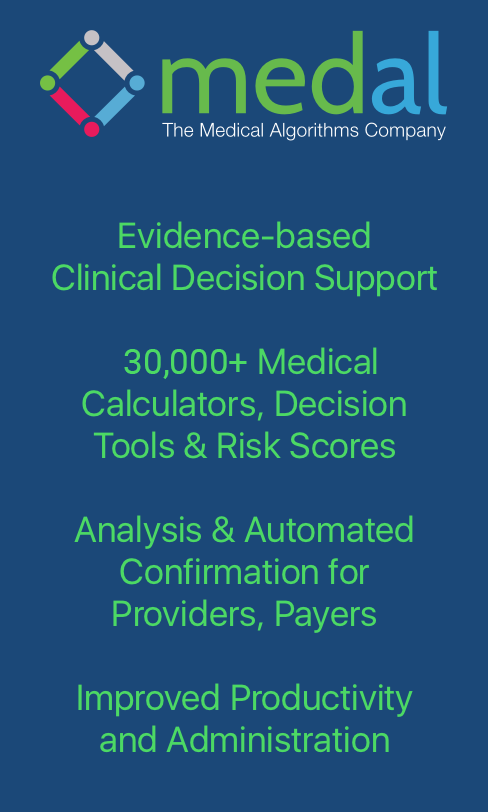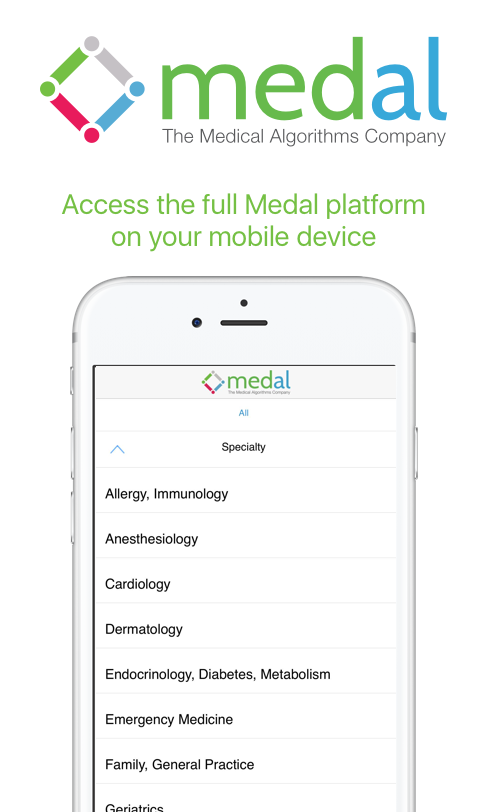Revised Trauma Score (RTS)
To rapidly triage trauma patients using the Revised Trauma Score (RTS).
- Medical Calculator
Revised Geneva Score for Diagnosis of Pulmonary Embolism in the Emergency Department
To evaluate a patient in the Emergency Department for the probability of a pulmonary embolus using the revised Geneva score of Le Gal et al.
- Medical Calculator
Comorbidity Index and Score of Charlson
To use the comorbidity score developed by Charlson et al to give an estimate of 10 year survival for a patient.
- Medical Calculator
Formula of Dubois and Dubois for Body Surface Area
To calculate a patient's body surface area (BSA) from the person's height and weight using the formula of Dubois and Dubois.
- Medical Calculator
Fatty Liver Index (FLI) of Bedogni et al for Predicting Hepatic Steatosis
To evaluate a patient for the risk of fatty liver using the Fatty Liver Index (FLI) of Bedogni et al.
- Medical Calculator
Allergic Conjunctivitis Scoring System for Signs & Symptoms
To measure the signs and symptoms of allergic conjunctivitis using the scoring system of Abelson et al.
- Medical Calculator
Estimated Blood Volume in Infants Based on Body Weight
To calculate a neonate's blood volume based on body weight.
- Medical Calculator
Covid-19 Clinical Features of Infection - 2019 Novel Coronavirus (2019-nCoV)
To evaluate a patient for signs and symptoms associated with an infection with the 2019 Novel Coronavirus (2019-nCoV).
- Medical Calculator
Body Mass Index (Quetelet's Index, BMI)
To calculate a patient's weight-to-height ratio (Broca index).
- Medical Calculator
CKD-EPI Formula for Predicting Glomerular Filtration Rate (GFR) from Serum Creatinine
To estimate a patient's glomerular filtration rate (GFR) from serum creatinine using the CKD-EPI formula of Levey et al.
- Medical Calculator
Estimating Dehydration and Fluid Volume Depletion in Cholera and Other Conditions
To determine the extent of fluid depletion and dehydration based on physical findings.
- Medical Calculator
Zika Virus (ZIKV) Infection (Zika Fever)
To evaluate a patient for Zika virus infection (Zika Fever).
- Medical Calculator
Child-Pugh Score for Grading Hepatic Cirrhosis
To use clinical and laboratory data to grade the severity of cirrhosis.
- Medical Calculator
Classes of the American College of Surgeons (ACS) for Acute Hemorrhage
To categorize the blood loss from a patient using the American College of Surgeons (ACS) classification system.
- Medical Calculator
Diagnosis of Coronavirus Infection (COVID-19) - World Health Organization (WHO)
To identify a patient with possible 2019 Novel Coronavirus (2019-nCoV) infection using the WHO surveillance definitions.
- Medical Calculator
Glasgow Coma Scale
To assess the severity of a patient's coma based on clinical findings.
- Medical Calculator
Modified Early Warning Score for a Hospital Inpatient
To monitor a patient admitted to the hospital using the modified early warning score.
- Medical Calculator
Covid-19 Predicting Mortality In-Hospital - Coronavirus
To predict in-hospital mortality for a patient with COVID-19 using the model of Zhou et al.
- Medical Calculator


